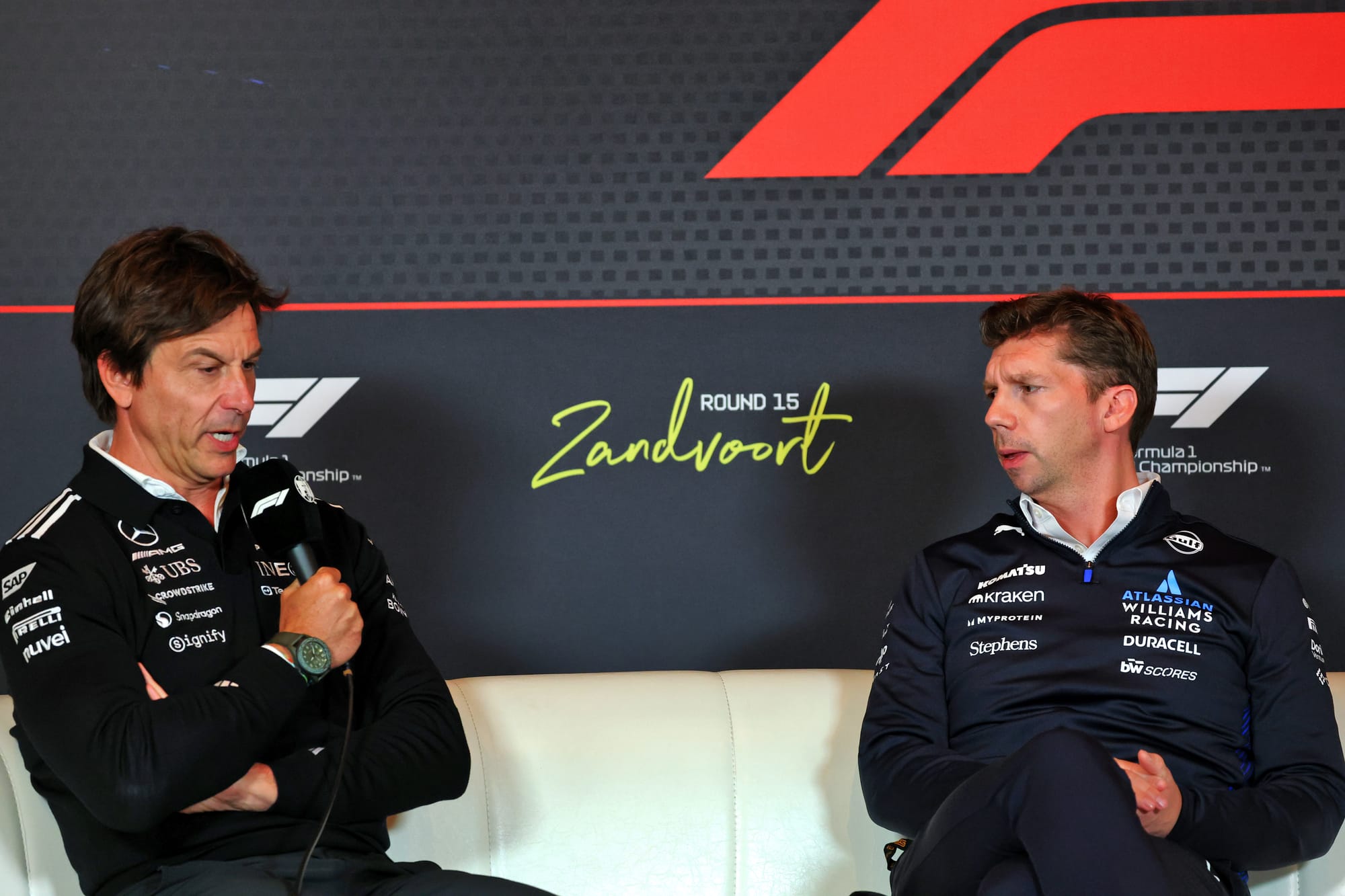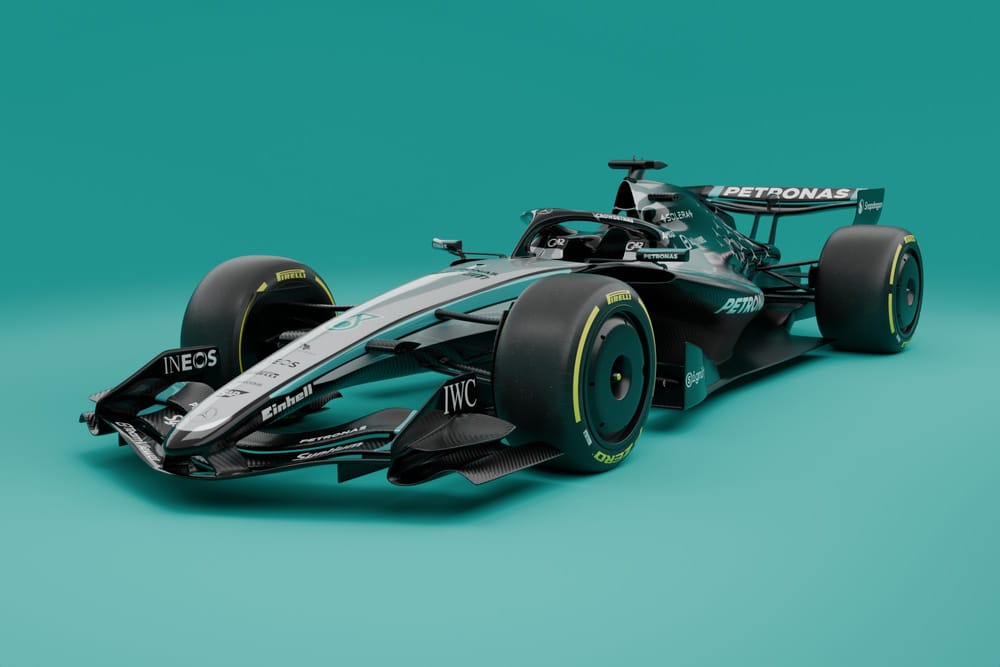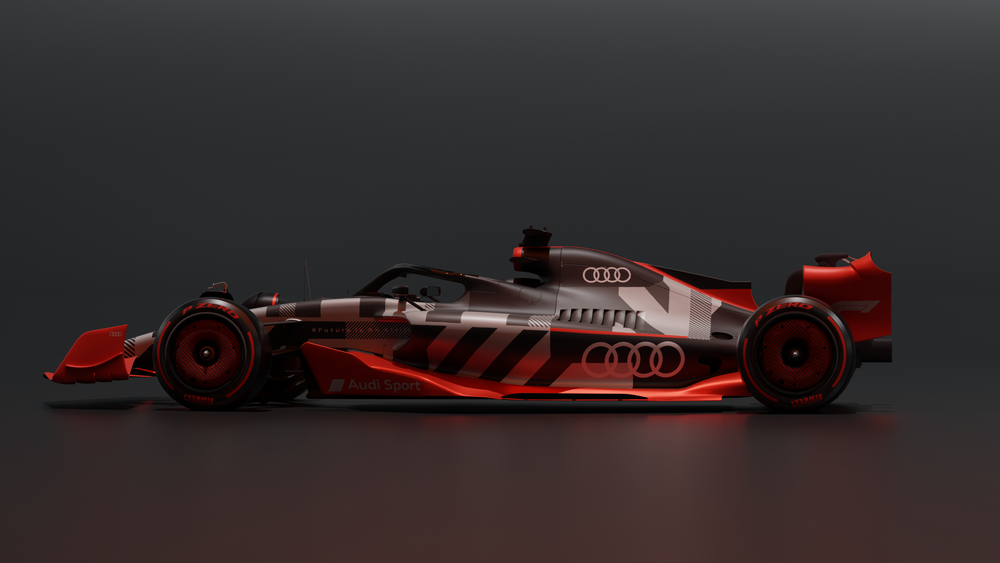Mercedes boss Toto Wolff has clarified what he meant by recent comments suggesting next year’s Formula 1 cars could top 400km/h on the straights.
Wolff’s bold claim came in an interview with German publication Auto Motor Und Sport over the summer break, where he suggested that this peak speed was on the table thanks to the increase of electrical energy that will be available for F1's new rules era.
Those remarks from Mercedes set some alarm bells ringing at rival teams, however, with their own early simulation models suggesting a 400km/h target was well out of reach.
Alpine’s Pierre Gasly, who recently tried out his team’s 2026 car model in the simulator, said he had seen no suggestions that he would be travelling that fast.
Asked about the stories of F1 hitting 400km/h, he said: “I don't believe stories, I only believe what I see.
“Sure we can go 400km/h with these cars if you change the gearbox and increase the straights and take off the first chicane in Monza.
"But I've tried the cars, I've tried the car in the simulator and I know what it does. I'm not too sure where that [400km/h figures] comes from, to be honest.
“So, yeah, we'll see. We'll see next year. I'm happy if my car goes 400km/h, that's for sure.”
Current and future Mercedes customer team Williams’ simulation has shown that it is not approaching the claimed 400km/h either.

Asked about Wolff’s comment, Carlos Sainz said: “I wish if that's the case, [because Mercedes] HPP must be doing a good job. But I didn't hit, anywhere, not close to 400km/h in the simulator. So I don't know where that comes from.”
Wolff has now explained, however, that the 400km/h figure was meant more as a theoretical level that could be reached – rather than something that would be delivered in real life.
Asked by The Race to clarify what he meant, Wolff said: “It sounds good, no? Everybody's talking those engines down, so I had to figure out, is there anything positive? And there is.
“If you were to deploy, obviously semi-sarcastically, but if you were to deploy all the energy on a single straight, you could make those cars go 400 kilometres an hour.
“I don't know if somebody got afraid by it, but we could. But there wouldn't be much electric energy left for the other few corners on a circuit.”

One of the ceilings on the 400km/h level being reached is that the FIA has imposed regulations that limit the amount of time that full power can be deployed.
If teams were unrestricted, they would burn all their electrical energy accelerating out of the corners and then slow down dramatically over the remainder of the straight.
But to avoid too much of cars dramatically losing speed at the end of straights, a ramp-down rate has been introduced for the electrical element.
Power reduction will not be allowed to go from the full 350kW allowance to zero in an instant. Instead, depending on the nature of a track, the power delivery can be reduced at no greater a rate than either 50kW or 100kW in any one-second period.
This move should ensure that drivers have energy deployment available over a much greater distance.
The 400km/h figure is also interesting because it is faster than even current cars can achieve.
The accepted highest speed recorded at a modern F1 event was at the 2016 European Grand Prix in Baku, where Valtteri Bottas hit 378km/h (234.9mph).




